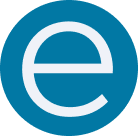
epocrates
Noninvasive nerve stimulator offers alternative treatment for sleep apnea
August 10, 2023

What’s new in sleep apnea treatment?
Results from the transcutaneous electrical stimulation in sleep apnea (TESLA) trial were published in the Lancet’s eClinical Medicine journal this month and demonstrate the potential of a new, non-invasive therapeutic option for patients with obstructive sleep apnea (OSA). (Short 2023) Researchers found that using a transcutaneous electrical nerve stimulation (TENS) machine, a device typically reserved for pain management, led to improvements in nocturnal breathing and a significant reduction in daytime exhaustion. (Ratneswaran 2023)
What’s the potential patient impact?
OSA affects one billion people worldwide. The condition can cause individuals to stop breathing during the night, often leading to fatigue, lack of attention, and headaches the next day. OSA is often associated with obesity, and without significant weight loss, the condition frequently requires long-term treatment. The standard treatment for OSA is continuous positive airway pressure (CPAP) therapy; however, the authors of the study noted that CPAP had a 3-month adherence rate of 75% that dropped to 25% 2-months later. (Ratneswaran 2023) Evidence-based alternatives to CPAP are limited and include mandibular advancement devices and surgical options, both of which may lead to undesirable side effects and can be cost prohibitive. (Short 2023)
What’s the evidence?
The King’s College London and Guy’s & St. Thomas’ NHS Foundation Trust researchers found that home-based TESLA treatment for OSA patients resulted in improved sleep and oxygen saturation. Between June 2018 and February 2023, 56 participants who were failing to consistently use their CPAP machines were enrolled in a small, single-center trial and were randomly selected to either receive TESLA intervention via a TENS machine or continue their usual care for at least three months. (Ratneswaran 2023)
After three months, the difference in apnea/hypopnea index (AHI) scores favored the TENS group versus the control arm. The oxygen desaturation index also dropped by an adjusted 8.3 events per hour with TENS therapy, demonstrating that the light, continuous electric stimulation of the TENS machine kept the participants’ airways open while they slept, allowing breathing to continue. (Ratneswaran 2023)
Additionally, the intervention group used their TENS device for an average of 4 days a week for 4.5 hours each night, while those in the control arm averaged zero hours of use of their CPAPs per night. This finding suggests that individuals may be more likely to use TENS therapy rather than a cumbersome CPAP device. (Ratneswaran 2023)
A multi-center trial is currently being planned to prove efficacy in different health care systems. (Short 2023)
Sources
(2023, Aug 3). Short, E. Noninvasive nerve stimulator may ease sleep apnea. MedPage Today. https://www.medpagetoday.com/pulmonology/sleepdisorders/105775
Ratneswaran D, et al. Domiciliary transcutaneous electrical stimulation in patients with obstructive sleep apnoea and limited adherence to continuous positive airway pressure therapy: a single-centre, open-label, randomised, controlled phase III trial. eClinicalMedicine. 2023 Aug 3; DOI: 10.1016/j.eclinm.2023.102112.

TRENDING THIS WEEK






